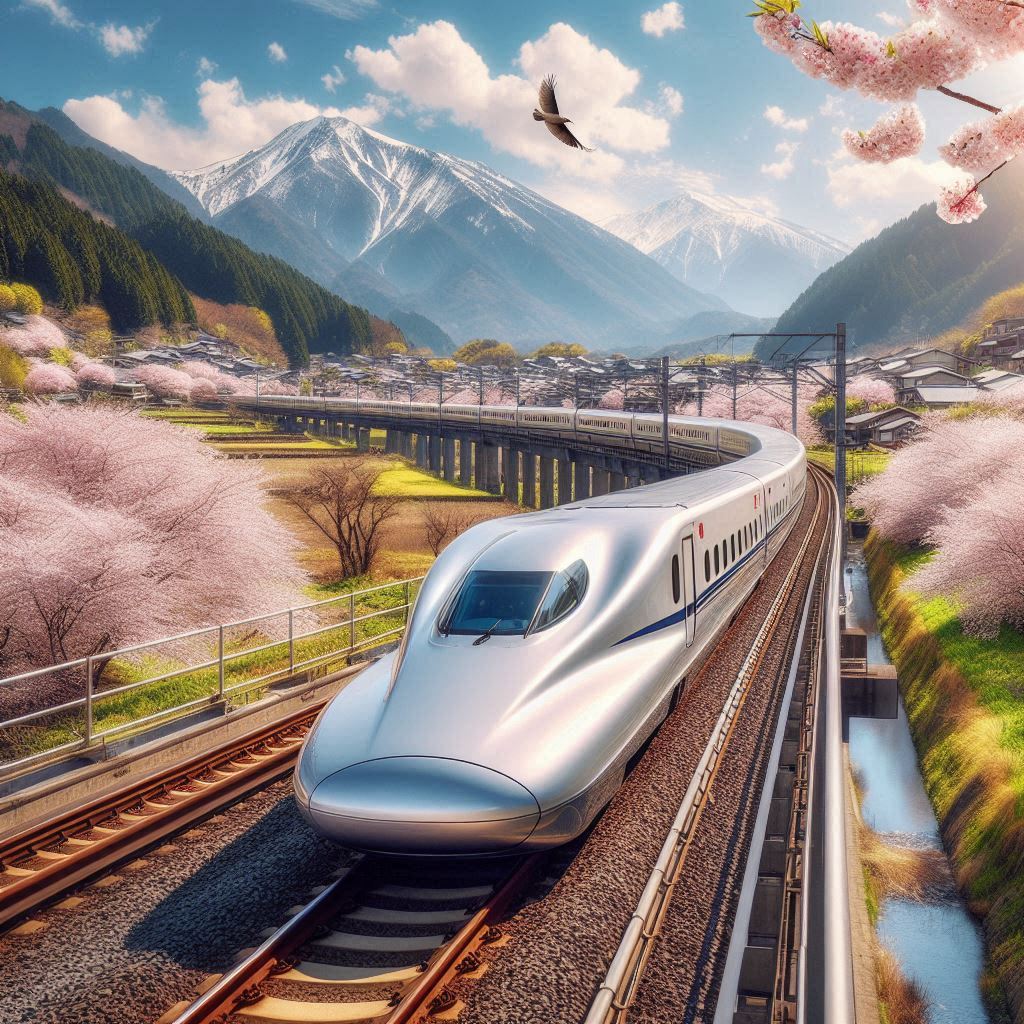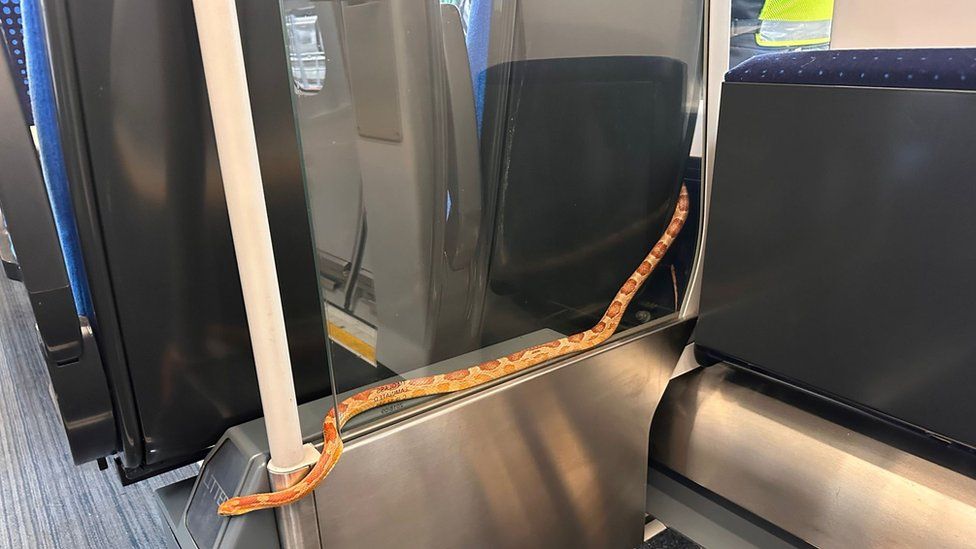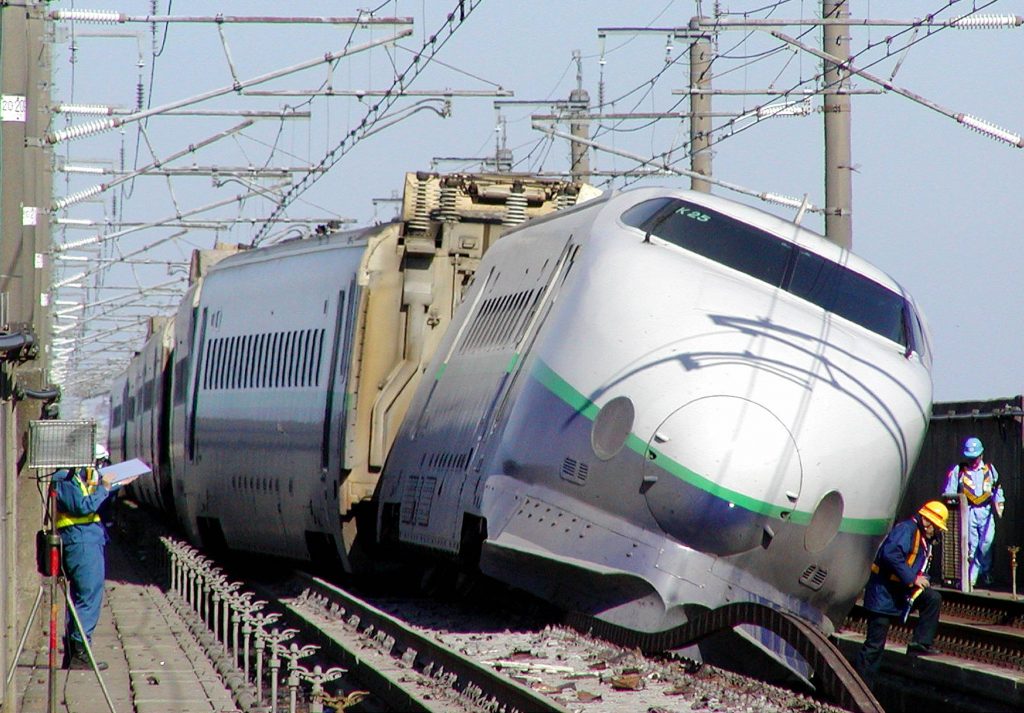
Watch short for this article (5 slides)
Beyond Punctuality: When the Unexpected Halts Japan's Legendary Shinkansen
Japan's Shinkansen, or bullet train network, is globally synonymous with breathtaking speed, efficiency, and almost mythical punctuality. Delays are measured not in minutes, but often in seconds. The system is a marvel of engineering, precise scheduling, and meticulous operation. Yet, even this paragon of reliability is occasionally subject to unforeseen disruptions, sometimes bizarrely so. The recent incident involving a snake found onboard a train highlighted this reality, momentarily pausing a system renowned for its seamless flow. This article delves into the rare but fascinating instances where the unexpected has caused delays on Japan's high-speed rail, exploring the types of incidents, the sophisticated systems designed to handle them, and why maintaining such precision is paramount.

The Foundation of Precision: Why Shinkansen Delays are So Rare
Understanding the rarity of delays requires appreciating the intricate system underpinning the Shinkansen's operation:
- Dedicated Infrastructure: Shinkansen lines run on tracks exclusively built for high-speed rail, completely separate from conventional lines. This eliminates conflicts with slower local trains, freight traffic, and minimizes the risk of obstructions found on regular tracks. Standard gauge tracks (1,435 mm) also contribute to stability at high speeds.
- Advanced Automatic Train Control (ATC): Unlike conventional signaling systems where drivers react to trackside signals, the Shinkansen employs a sophisticated ATC system. Signals regarding permissible speed are transmitted directly into the driver's cab, and the system can automatically apply brakes if the train exceeds speed limits or needs to stop, minimizing human error.
- Centralized Traffic Control (CTC): All Shinkansen operations across vast networks are monitored and managed from centralized control centers. These centers oversee train positions, scheduling, track conditions, and can orchestrate network-wide responses to any disruptions in real-time.
- Meticulous Scheduling & Operations: Timetables are planned with extreme precision, often down to 15-second intervals. Drivers and conductors adhere to strict protocols, and platform turnaround times (including cleaning) are famously swift – sometimes completed within 7 minutes. (JR Central Safety Systems provides insights into their operational framework).
- Proactive Maintenance Culture: Rolling stock and tracks undergo rigorous, regular inspections and preventative maintenance schedules. Advanced monitoring systems detect subtle irregularities that could potentially lead to future issues, allowing for intervention before a failure occurs.
The result is an average annual delay across the entire Shinkansen network often cited as being **under one minute per train**, including delays caused by natural disasters. This extraordinary statistic sets the context for why any delay, especially an unusual one, becomes noteworthy.
When the Unexpected Strikes: A Gallery of Unusual Shinkansen Incidents

Despite the robust systems, freak occurrences and unavoidable events can still cause delays. Here’s a closer look at some documented types of unusual incidents:
1. Fauna Factor: Animals on the Line (or Onboard)
- The Serpent Scenario: In May 2024, a passenger reported finding a roughly 40-centimeter snake, believed to be non-venomous, aboard a Shinkansen traveling between Nagoya and Tokyo (originally reported as Nagoya-Osaka in some sources, but later clarified). The train made an unscheduled stop at Hamamatsu Station in Shizuoka Prefecture. JR Central staff boarded the train, safely captured the snake, and conducted a safety check of the carriage. This process resulted in a **precisely documented 17-minute delay**. While rare, such incidents require immediate action to ensure passenger safety, prevent panic, and confirm no further unexpected "passengers" are present.
- Wildlife Collisions (Deer, Bears, etc.): Collisions with larger animals like deer or occasionally bears, particularly in more rural sections of lines like the Tohoku or Joetsu Shinkansen, can occur despite extensive fencing. At speeds exceeding 200-300 km/h, such impacts pose a significant risk, potentially damaging the train or even causing derailment.
- Prevention: JR companies invest heavily in robust trackside fencing. Some areas experiment with ultrasonic deterrents emitting sounds unpleasant to deer, though effectiveness varies. Vegetation near tracks is also carefully managed. (JR East Environmental Report often discusses wildlife measures).
- Response: Automatic brakes engage upon significant impact. The train stops immediately, and the crew, in coordination with CTC, arranges for track and vehicle inspections before proceeding. Delays can range from **10 minutes to over an hour**, depending on the severity of the impact and required checks.
2. Acts of Nature: Beyond Predictable Weather
- Earthquake Emergency Stops: Japan is seismically active, and the Shinkansen network is equipped with world-leading earthquake early warning systems (such as JR's UrEDAS - Urgent Earthquake Detection and Alarm System). These systems detect the initial, faster, non-damaging P-waves from an earthquake and automatically trigger emergency braking across the affected network sections *before* the more destructive S-waves arrive. This critical safety measure protects trains traveling at high speeds from potential derailment due to ground shaking or track damage.
- Response: Following an earthquake-triggered stop, operations cease until comprehensive track inspections confirm safety. Delays can vary significantly based on the quake's intensity and proximity, ranging from **a few minutes for minor tremors to several hours or even days** for major events requiring track repairs (as seen after the 2011 Tohoku earthquake).
- Extreme Weather Beyond Forecasts: While standard procedures exist for typhoons (speed restrictions, suspensions based on wind/rain thresholds), sudden, localized events like unexpected torrential downpours or lightning strikes affecting power systems can cause brief, unforeseen delays.
3. Human Element: Unpredictable Actions
- Passenger Actions:
- Emergency Door Activation: Passengers attempting to open emergency doors without cause triggers immediate stops and inspections, causing delays (e.g., a reported 25-minute delay on the Tokaido Shinkansen). Motives can range from panic attacks to intoxication or misunderstanding.
- Medical Emergencies: Urgent medical situations onboard require unscheduled stops for paramedics to access the patient, leading to necessary delays.
- Security Issues: Unattended baggage, disruptive passengers, or security alerts necessitate train stops and intervention by staff and potentially police.
- External Interference:
- Unauthorized Drone Sightings: Flying drones near Shinkansen lines is strictly prohibited due to collision risks. Sightings trigger immediate operational halts while the area is searched, and authorities are notified. A reported incident on the Kyushu Shinkansen caused a **45-minute delay** as a precautionary measure.
- Track Obstructions/Trespassing: Although rare due to dedicated tracks and fencing, objects thrown onto tracks or unauthorized persons entering the railway corridor force immediate emergency stops and inspections.
- Adjacent Incidents: Fires near the track, construction accidents impinging on the railway's clearance, or power line issues unrelated to JR can sometimes impact Shinkansen operations.
This table summarizes some illustrative examples (Note: Durations are approximate and can vary widely):
| Incident Type | Example Scenario | Typical Response | Potential Delay Range |
|---|---|---|---|
| Onboard Fauna (Snake) | Snake found in carriage | Unscheduled stop, staff removal, safety check | ~15-20 minutes (as per recent case) |
| Wildlife Collision (Deer) | Train strikes deer on tracks | Emergency stop, track/vehicle inspection | 10 minutes - 1+ hour |
| Earthquake Detection | Early warning system triggers braking | Automatic stop, network-wide track inspections | 5 minutes - several hours/days |
| Passenger Action (Emergency Door) | Passenger activates emergency release | Immediate stop, inspection, staff intervention | ~20-30 minutes |
| External Interference (Drone) | Unauthorized drone spotted near tracks | Operational halt, area search, police notification | ~30-60 minutes |
Mastering Disruption: The Shinkansen Response Protocol

When an unexpected event occurs, a well-rehearsed sequence of actions minimizes delay and ensures safety:
- Immediate Stop & Situation Assessment: Automatic systems (ATC, earthquake detection, impact sensors) or driver/conductor intervention brings the train to a safe halt. The crew immediately assesses the situation and reports precise details to the Central Traffic Control (CTC).
- CTC Coordination: The CTC becomes the nerve center, evaluating the incident's scope, protecting the affected area (warning other trains), and dispatching necessary personnel (maintenance crews, animal control, emergency services).
- On-Site Resolution & Inspection: Specialized teams address the specific issue (removing an animal, inspecting track/vehicle damage, assisting a passenger). Thorough safety checks are conducted before authorization is given to resume operation.
- Network Adjustment: CTC works rapidly to adjust schedules for following trains, potentially rerouting or altering stopping patterns across the network to mitigate cascading delays. Information is disseminated to station staff and passengers.
- Passenger Information & Care: Clear announcements are made onboard and at stations regarding the nature of the delay and estimated resumption time. For significant delays, staff provide assistance, and passengers can typically obtain official delay certificates (`chien shōmeisho`) for employers or connections. Apologies for the inconvenience are standard practice, reflecting the high service expectations.
Conclusion: Resilience in the Face of the Rare
Japan's Shinkansen remains an undisputed global benchmark for railway punctuality and reliability, built on decades of technological innovation and operational discipline. While incidents like a snake onboard capture headlines precisely because they are so unusual, they serve as reminders that no complex system is entirely immune to the unpredictable. The true strength of the Shinkansen lies not just in its near-perfect daily performance, but also in its robust safety systems and highly efficient, well-practiced procedures for handling the rare occasions when the unexpected does occur. Each incident, however bizarre, offers lessons learned, contributing to the ongoing refinement of a system dedicated to moving millions safely and swiftly across Japan.